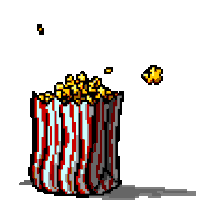
Rationale: In this lesson, students will learn to identify the phoneme /p/, represented by P. Students will learn to recognize /p/ in spoken words by learning a meaningful representation (popping popcorn) and the letter symbol P, practice finding /p/ in words, and apply phoneme awareness with /p/ in phonetic cue reading by distinguishing rhyming words from beginning letters.
Materials: Primary paper and pencil, chart with “Parker’s pet parrot played with the puppy”, drawing paper and crayons, Dr. Seuss’s ABC (Random House, 1963), word cards with PLAY, PET, PINNED, PORT, PUCK, assessment worksheet identifying pictures with /p/ (URL below)
Procedures:
-
Say: Our written language is a secret code. The tricky part is learning what letters stand for—the mouth moves we make as we say words. Today we’re going to work on spotting the mouth move /p/. We spell /p/ with letter P. P sounds kind of like something is popping, like popcorn or a balloon.
-
Let’s pretend that we are making popcorn, /p/ /p/ /p/ (make hand gestures of popping) Notice how your lips come together when you make the sound? When we say /p/, we build up air behind our lips that are pressed together, and then let the air go to make the /p/ sound.
-
Let me show you how to find /p/ in stop. I’m going to stretch stop out in super slow motion and listen for my popping sound. Ss-t-o-o-p. I felt my lips come together to make the popping sound at the end of stop!
-
Let’s try a tongue twister [on chart]. “ Parker’s pet parrot played with the puppy. “ Everybody say it three times together. Now say it again, and this time, make the /p/ at the beginning of the words really loud. “ Parker’s pet parrot played with the puppy.” Try it again, and this time break it off the word: “ /p/ arker’s /p/ et /p/arrot /p/layed with the /p/uppy.”
-
[Have the students take out primary paper and pencil.] We use letter P to spell /p/. Let’s write the lowercase p. Start right at the fence, and bring the line all the way down below the sidewalk. Then draw a backwards c starting just below the fence where you just made the line, and ending the c at the sidewalk. I want to see everybody’s p. After I put a smile on it, I want you to make nine more just like it.
-
Call on students to answer and tell how they knew: Do you hear /p/ in park or start? Pour or roar? Sock or spot? Say: Let’s see if you can spot the mouth move /p/ in some words. Make the popping motion if you hear /p/: The, park, had, plenty, of, pink, players, performing.
-
Say: “Let’s look at an alphabet book. Dr. Seuss tells us about a funny bear who is wanting to change the color of his pajamas! Read the page, emphasizing /p/. Ask the children if they can think of other words with /p/. Ask them to make up a silly creature name like Pipping-popper-pop or Petter-pinky. Then have each student write their silly name with invented spelling and draw a picture of their silly creature. Display their work.
-
Show PLAY and model how to decide if it is play or slay: The P tells me to make the sound /p/ so this word is ppp-lay. You try some PET: pet or set? PINNED: send or pinned? PORT: Port or sort? PUCK: suck or puck?
-
For assessment, distribute the worksheet. Students are to complete the partial spellings and color the pictures that begin with P. Call students individually to read the phonetic cue words from step #8.
Reference:
Patty the Pretty Pig, Sarah Autrey
http://www.auburn.edu/academic/education/reading_genie/constr/autreyel.html
Assessment worksheet
http://www.kidzone.ws/kindergarten/p-begins1.htm
Popping Popcorn with P
